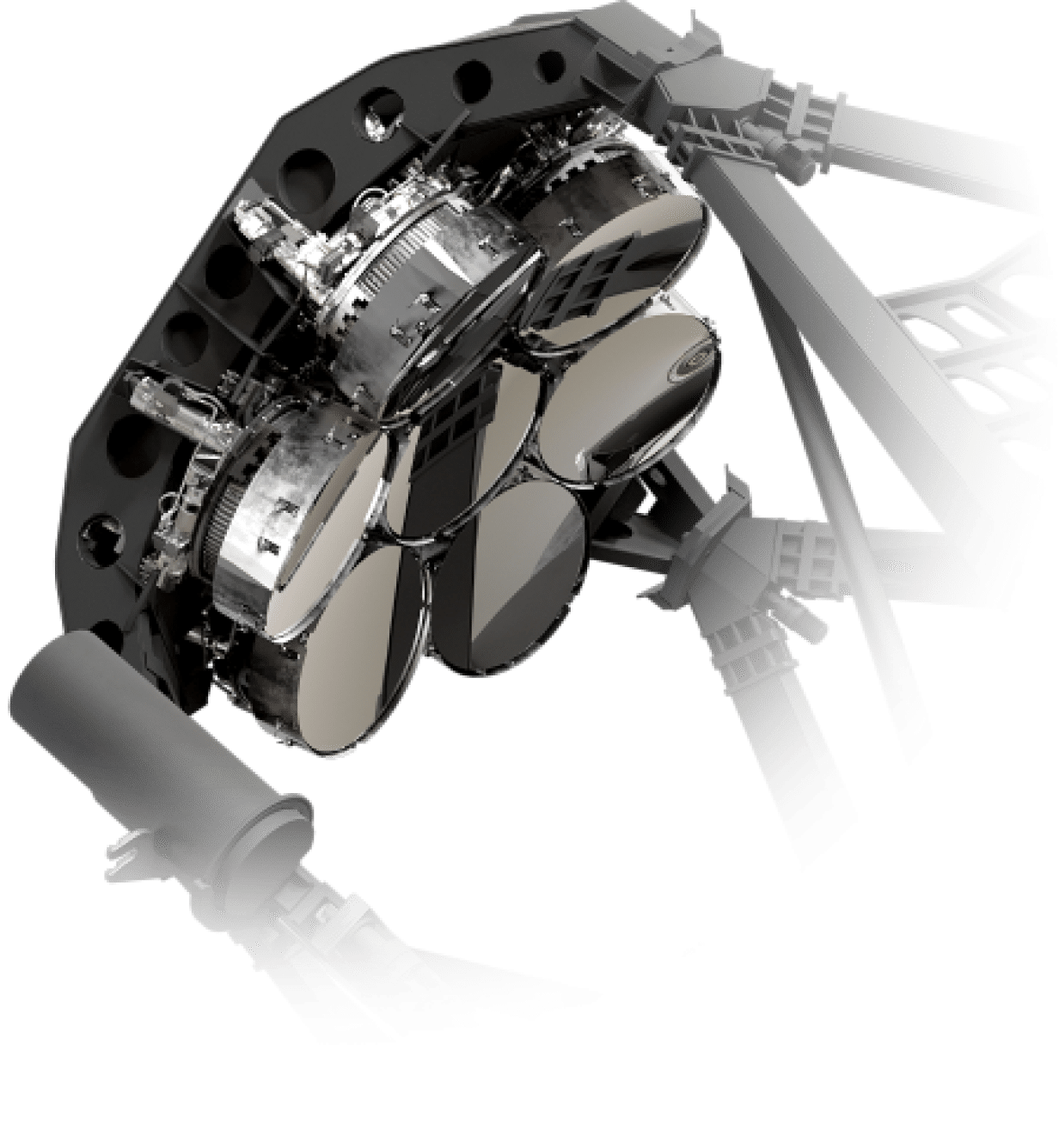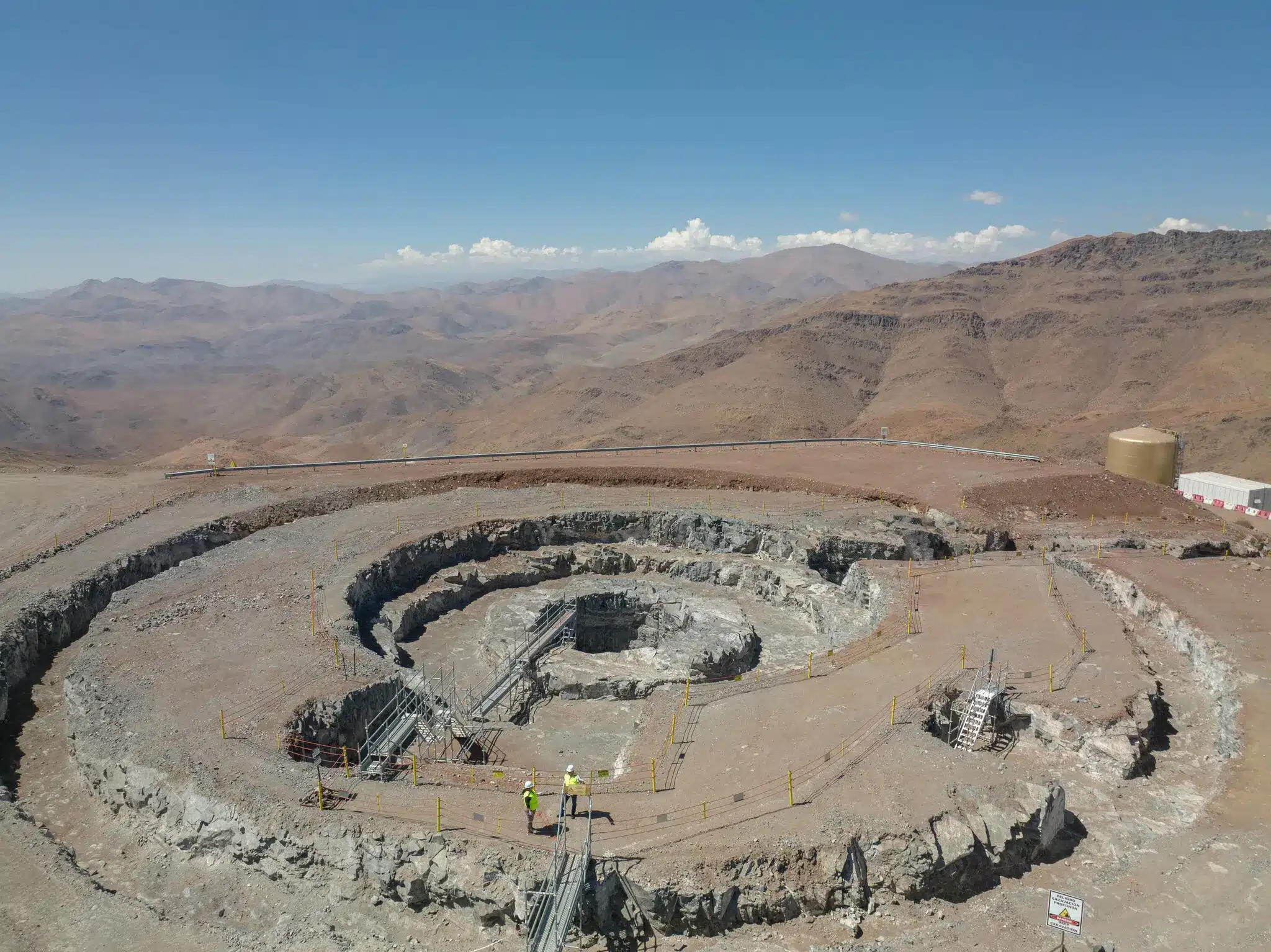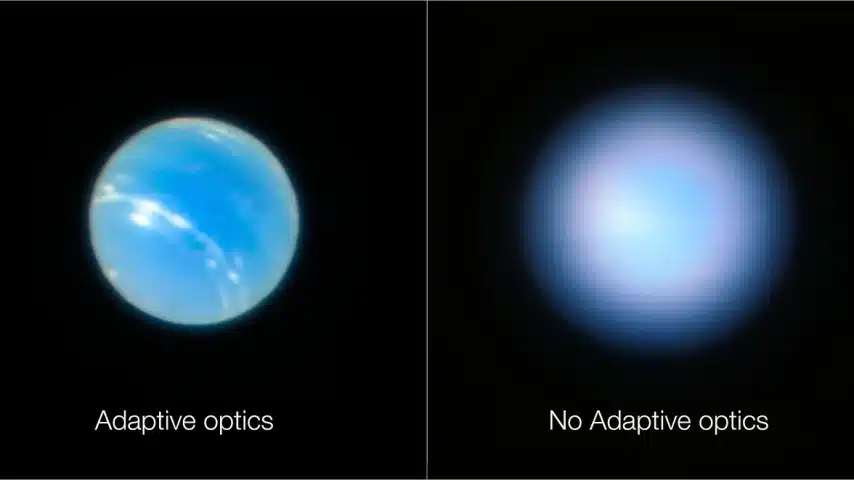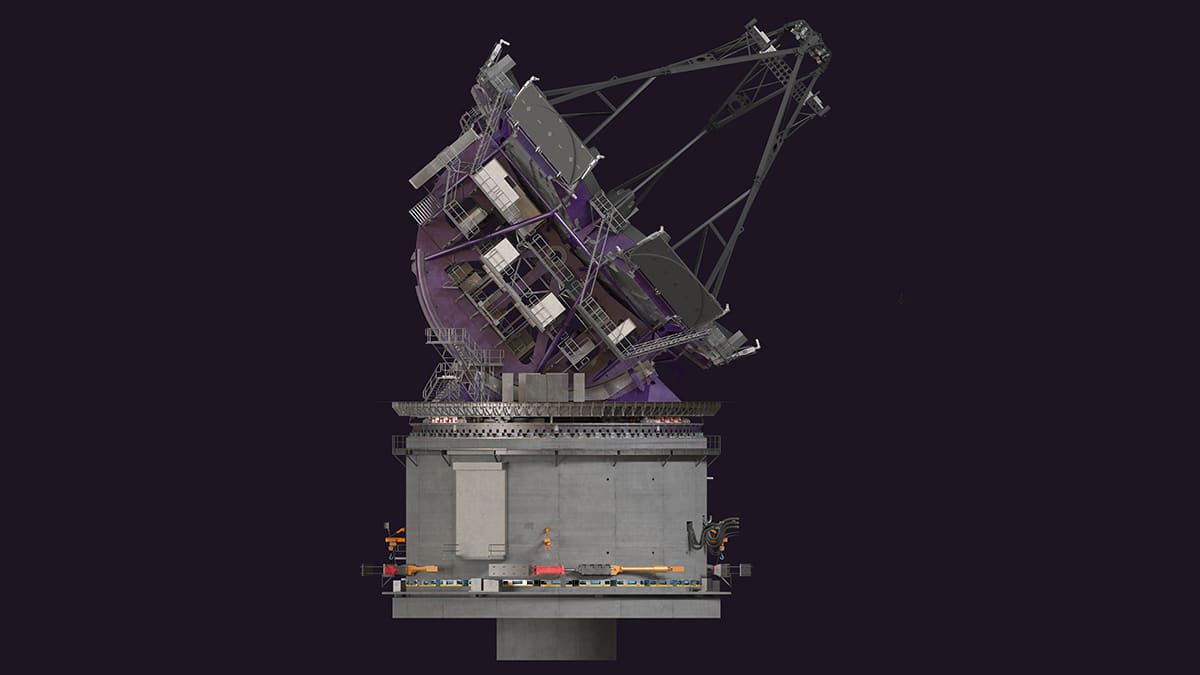
Magic Mirrors:
Making the Atmosphere Disappear
Ever wonder why stars seem to twinkle? It’s the Earth’s atmosphere causing turbulence and distorting the starlight we can see from the ground. Adaptive optics counteract this natural blurring effect. The Giant Magellan Telescope has seven adaptive secondary mirrors that use the world’s most advanced optical technologies ever developed — as close to magic as engineering gets. The magic mirrors hang above the giant primary mirrors’ light path, deforming their surface at 2,000 times per second as they collect distorted light reflections and clean them up before sending a concentrated beam of light to the telescope’s scientific instruments.
Deformable Surface
The adaptive secondary mirror surface can reshape 2,000 times per second using the world’s most advanced wavefront sensors and algorithms to correct for the optical blurring effect of Earth’s atmosphere.
Small and Thin
Adaptive secondary mirrors have a glass-like Zerodur surface that is flexible because of its 1.05 meter diameter and 2 millimeter thickness.
Powered by Magnets
To control the shape of the adaptive secondary mirror, 675 magnets are bonded to the back of the mirror that are pushed or pulled on by electromagnetic actuators.
Internal Metrology
The 150 micron (thickness of 3 human hairs) air gap between the mirror surface and its frame is used to form a capacitive sensor to help measure its alignment and adjust how the mirror’s surface must adapt to incoming light.
Seven Pack Match
Each adaptive secondary mirror is paired and aligned with only one of the giant seven primary mirrors and is responsible for receiving the distorted light reflected from this primary mirror.



